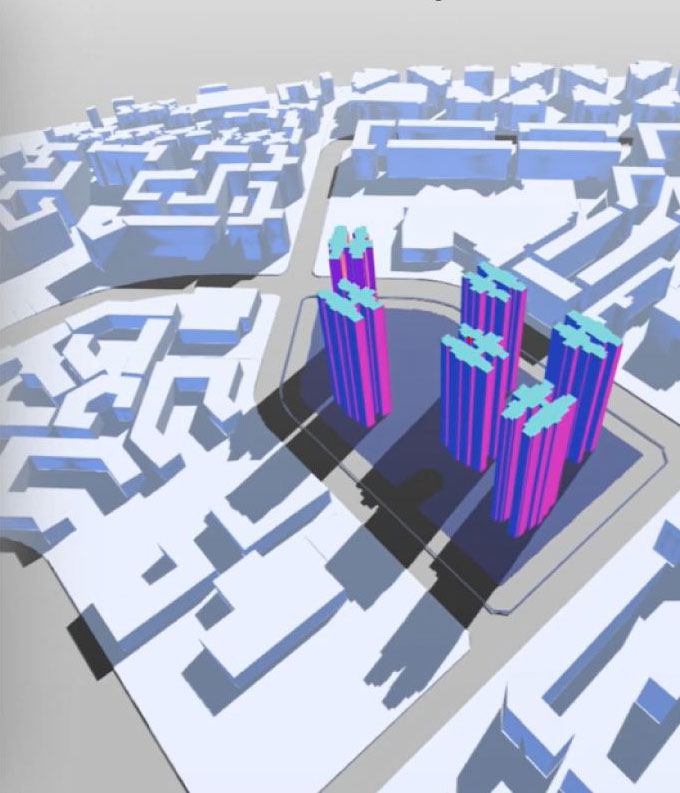In developing webtools for designers we were intrigued to begin getting direct feedback from users. With this feedback we are hoping to conduct a two part optimization – optimization of design results and optimization of interface, model set up and results delivery to best meet the user’s requirements.
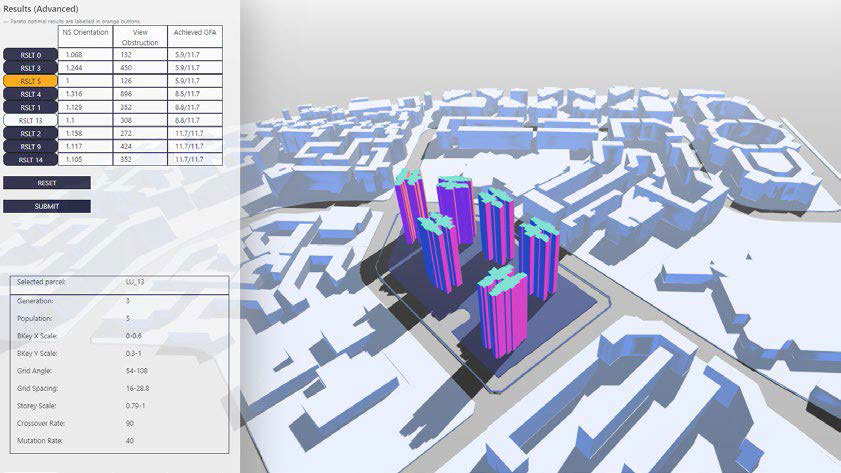
The results supported our initial conjecture that improved understanding of algorithms leads to greater confidence in the generated results.

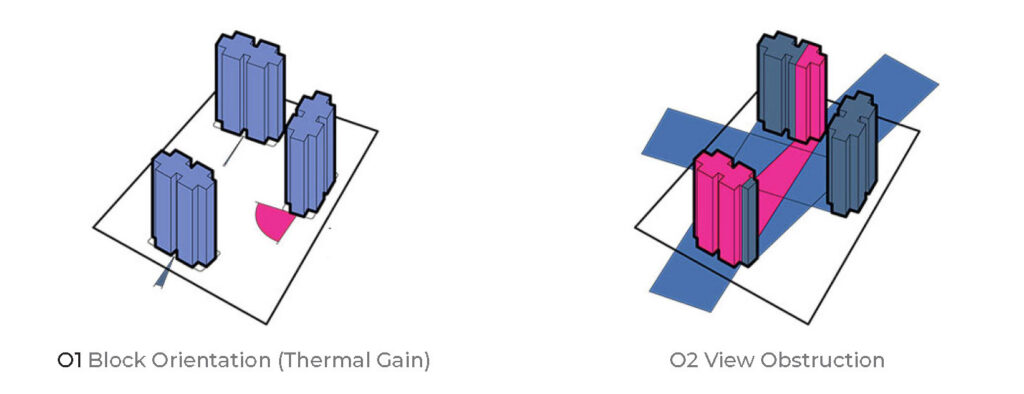
In this test protocol, shared at SIMAUD 2023, we provided users with a tool to simulate urban development for a single site in Singapore. The digital model searches among five variable parameters (P1-5) for a best outcome defined by 1) achieved gross floor area, 2) minimized obstruction of views between units, 3) best building orientation relative to sunpath (to minimize solar thermal gain.)
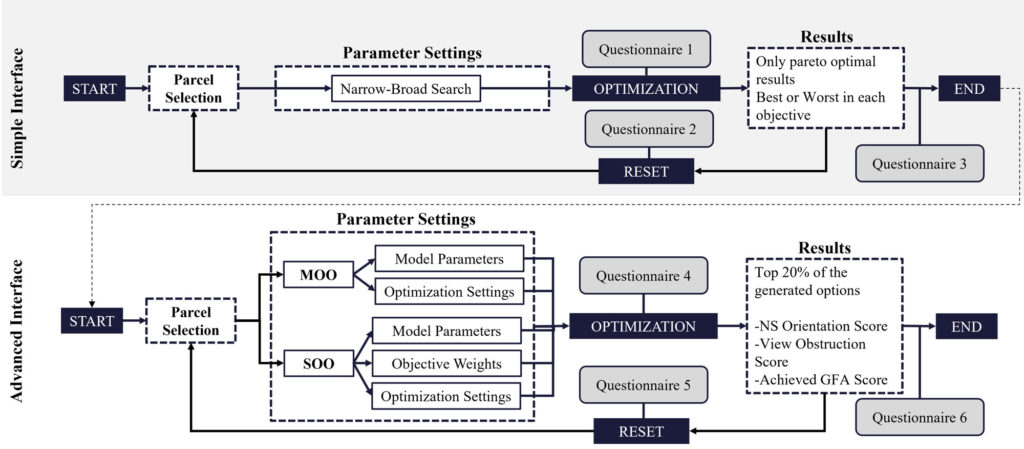
We designed the web interface to introduce questionnaires at each step of the optimization process, asking about user understanding and assessment of the model outputs.
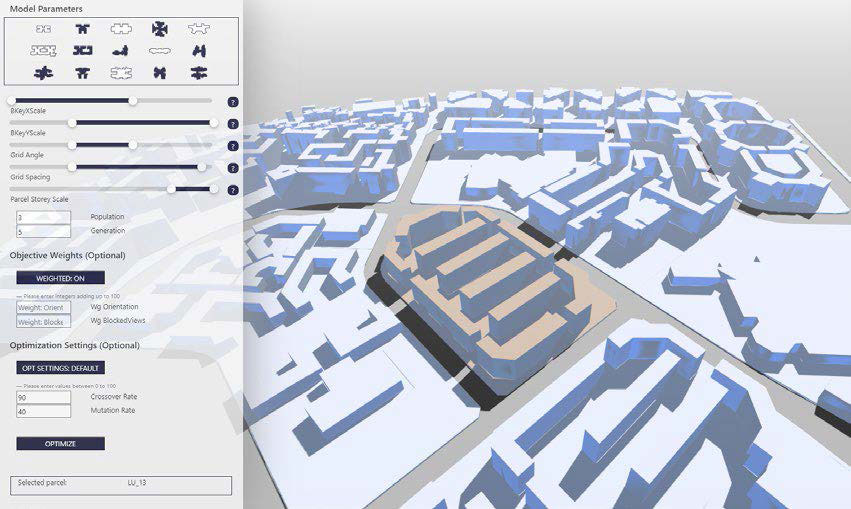

We collected datapoints on each user interaction with the tool, and their responses to surveys at several points. Several interfaces were developed to provide instructions to the users, gather their initial design parameter ranges and constraints, visualize and select results and provide feedback on their perception of the design optimization process.

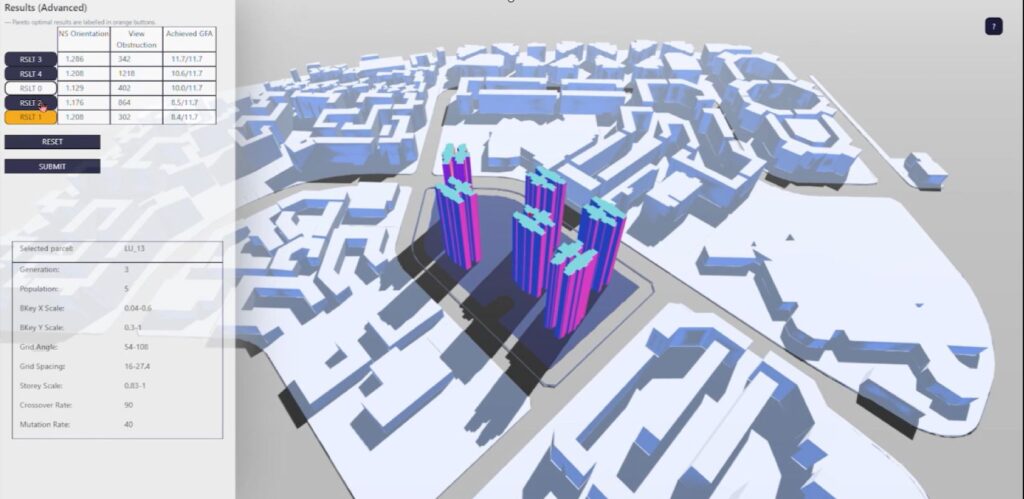

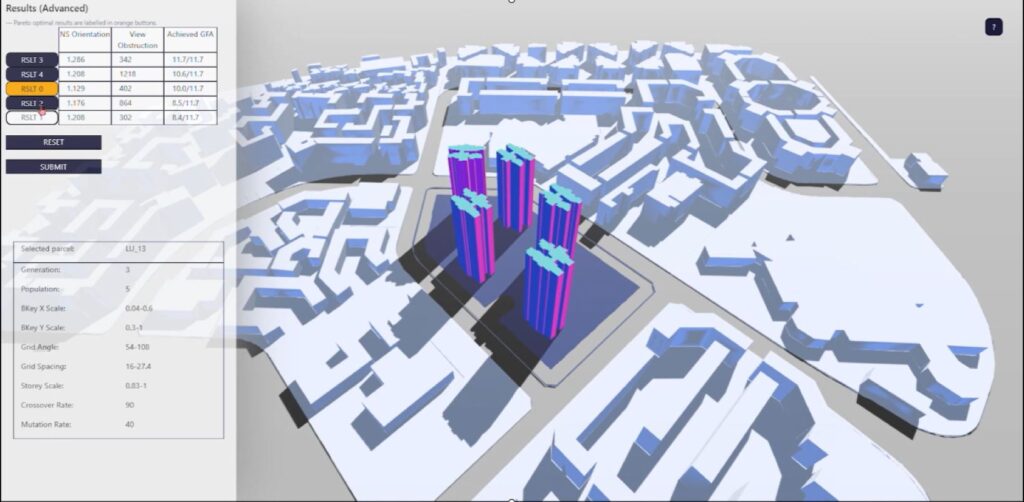
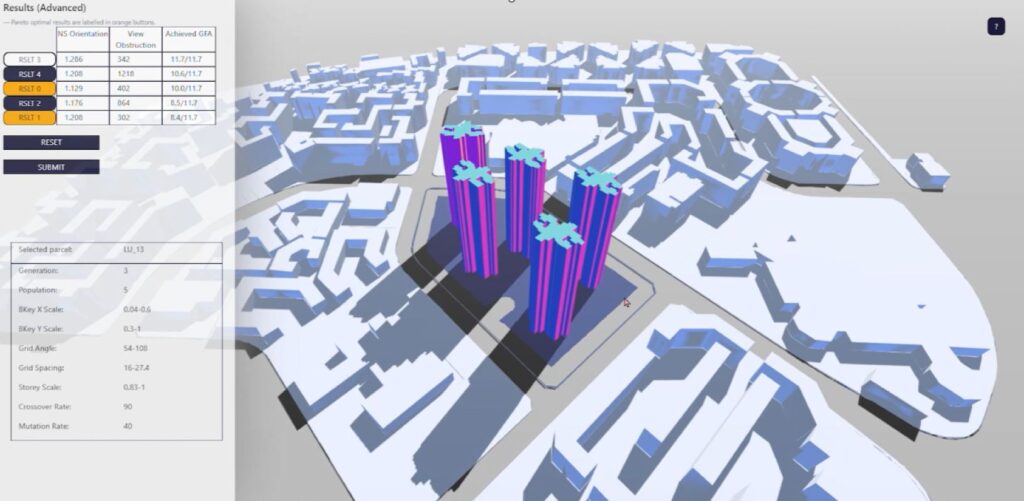
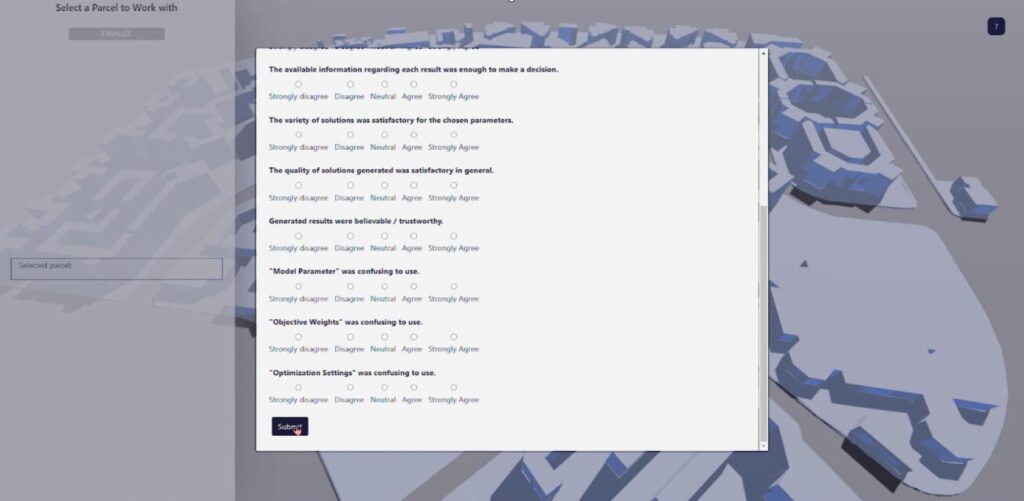
Credits:
PI: F Peter Ortner
Research Assistant: Anna Yenardi
PhD Student: Tay Jing Zhi
Funding: URA Strategic Partnership Grant

